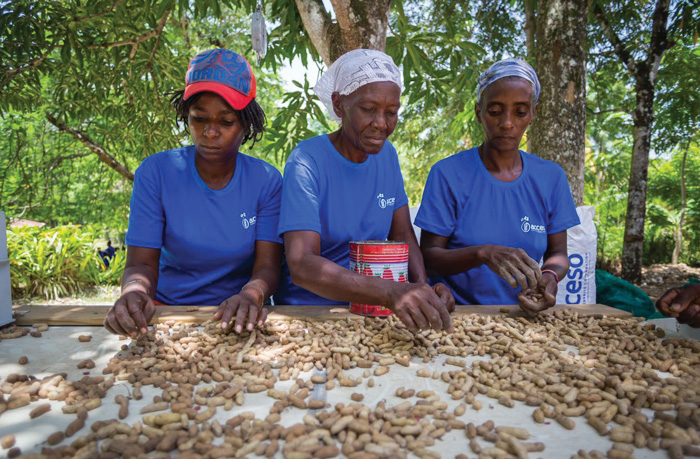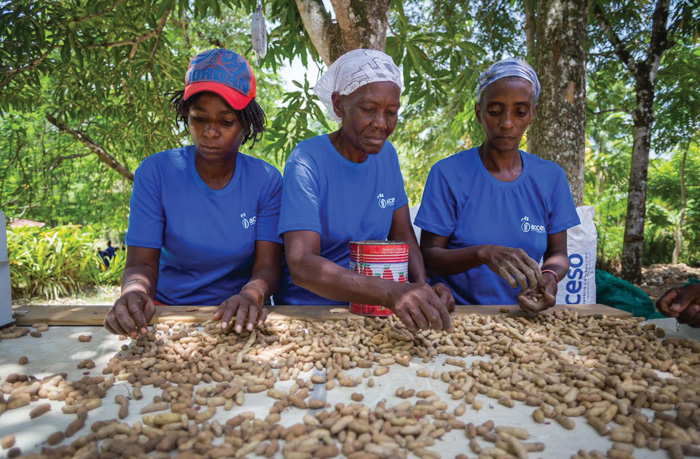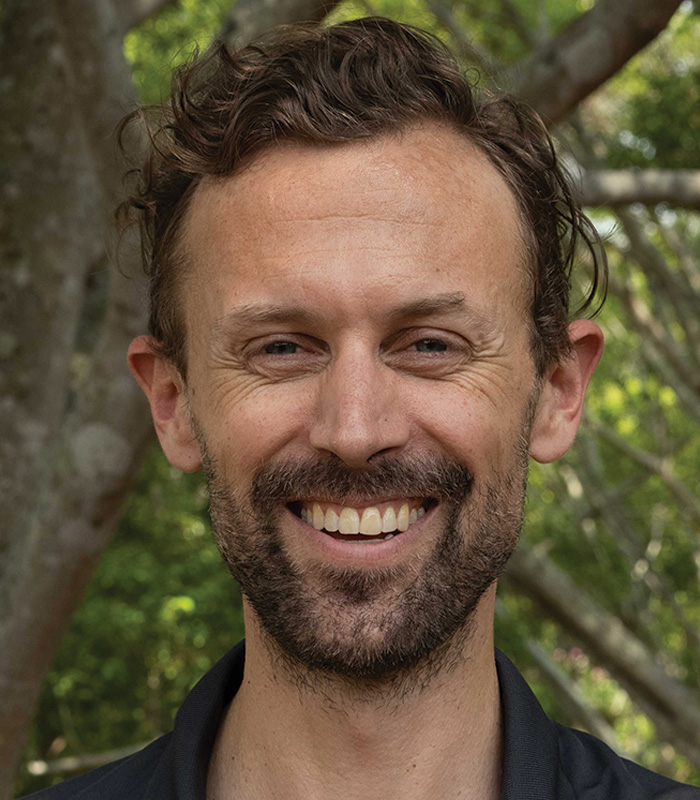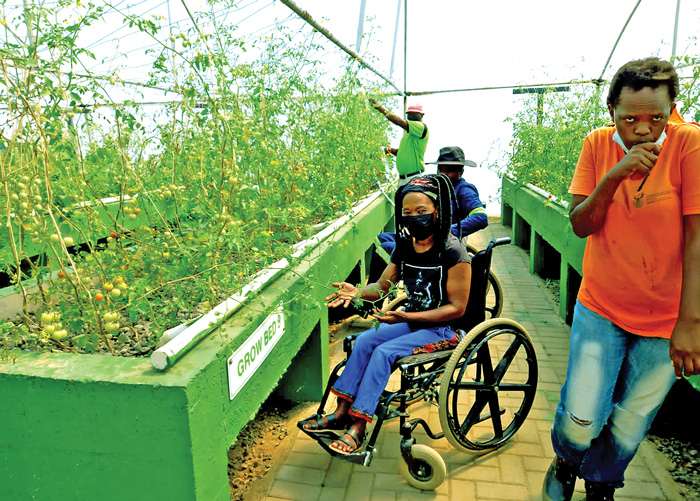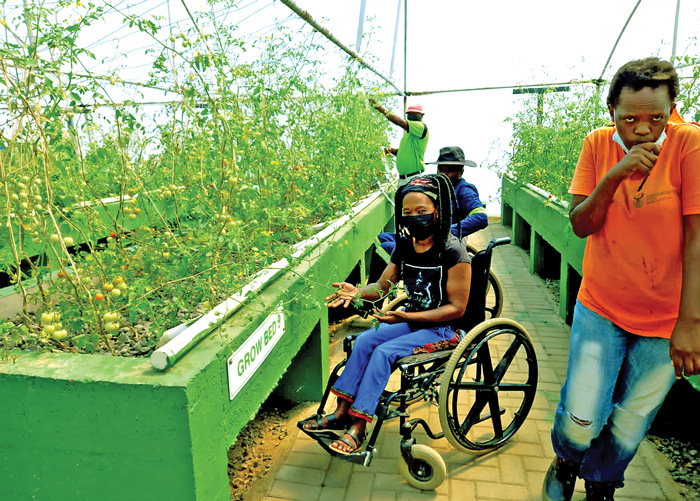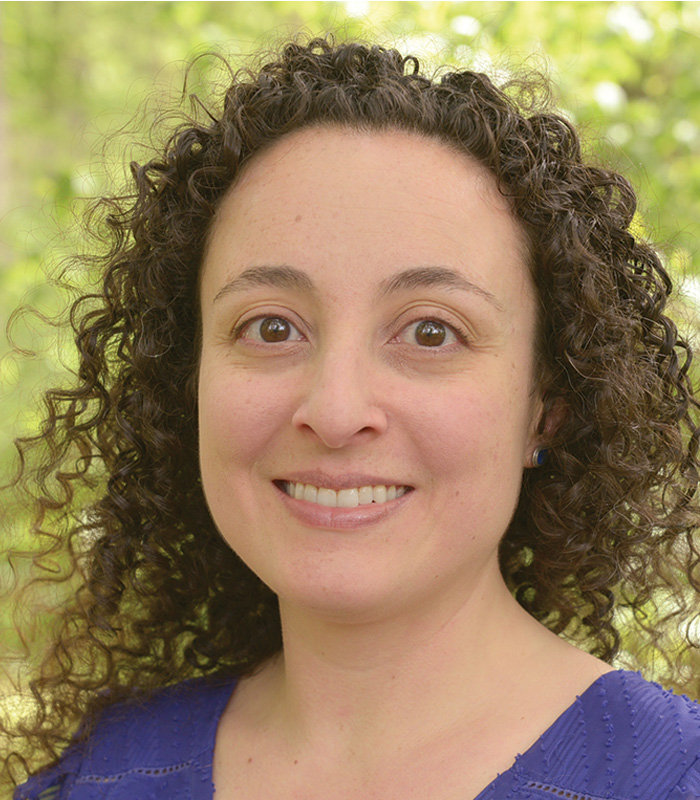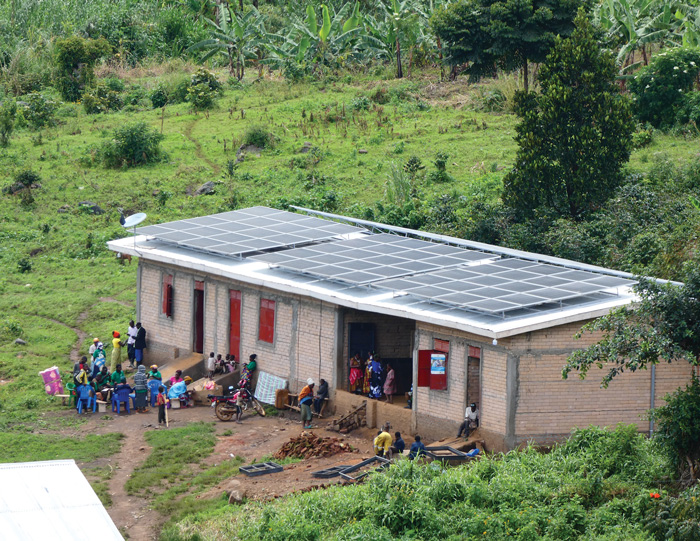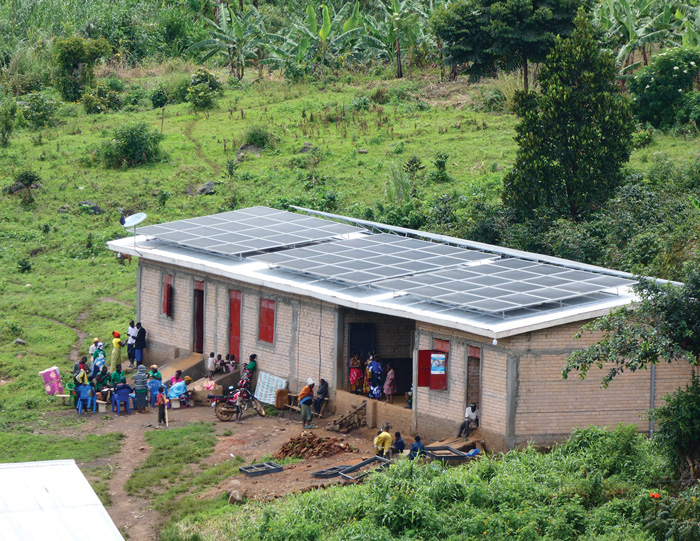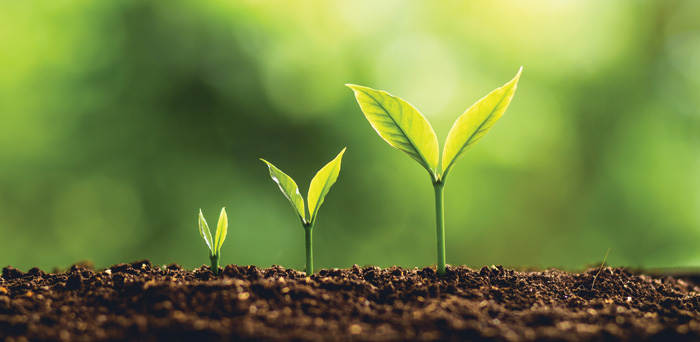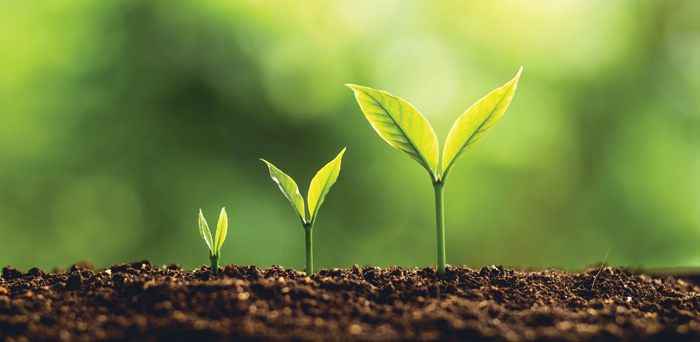
Empowering Innovators
Five deserving enterprises working to transform the food system earn top awards in year two of the Seeding The Future Global Food System Challenge.
Article Content
It’s only the second year of the Seeding The Future Global Food System Challenge, but already Bernhard van Lengerich, whose Seeding The Future Foundation created and funded the Challenge, has seen an incipient trend that is very satisfying: Some prior winning enterprises have advanced to the next level of winners, fulfilling the Challenge’s high-bar requirements by using last year’s awards to help scale up toward quicker achievement of their worthy goals.
Food Systems for the Future Institute became a Grand Prize winner this year in the Challenge after leveraging its Growth Grant from last year to help rapidly expand efforts to commercialize black soldier fly larvae for chicken feed in Rwanda. And both INMED Partnerships for Children and the World Wildlife Fund, winners of Growth Grants this year, were recipients of Challenge Seed Grants in the first year of the competition.
“Our basic philosophy is to encourage, recognize, and support enterprises that have created innovative and highly impactful solutions and, through the structure of the Challenge, help them grow and scale their innovations to accelerate and maximize their impact to mitigate the global food crisis at a faster pace than they would have otherwise,” says van Lengerich. “We’re delighted that this seems to be exactly what is happening.”
The Challenge overall awards more than $1 million in prizes annually to inspire and support innovative, diverse, and multidisciplinary teams that are developing game-changing and highly impactful innovations that will help transform the global food system, make healthier diets more accessible, and empower consumers to make better choices for personal and planetary health.
Grand Prizes of $250,000 are awarded to organizations that have created innovations that are scalable, are economically feasible at scale, are trusted and compelling to consumers, and have demonstrated major impact potential to transform the food system by affecting millions of people.
The $100,000 Growth Grants are awarded to organizations that have demonstrated their innovation is doable and have projected both scalability and high-impact potential. And the $25,000 Seed Grants go to teams or organizations that have planted and nurtured high-potential innovative ideas and demonstrated their feasibility.
“The Challenge is awarding Seed Grants for ideas that are still at an early stage but are highly innovative and, once scaled, have potential for significant impact on people’s lives or the environment,” explains van Lengerich, former chief science officer and vice president for technology strategy for General Mills.
“Growth Grants are awarded for initiatives that are further along in their development: They have successfully demonstrated a proof of concept, established a small operation, and they have proven they can scale. And the Grand Prize winners have already shown that their innovation can be scaled and in addition has a major impact.”
The Challenge recognizes significant and high-impact innovations that benefit one or more of three intersecting domains: safe and nutritious food for a healthy diet; environmentally responsible practices; and affordable, equitable, and appealing solutions that are trusted by consumers.
While seeing its incentive design bear fruit already, the Challenge has also evolved in its second year: In its application and selection process, more emphasis has been placed on the size of impact on people and planet in the short, medium, and longer term. In addition, while open to all not-for-profits globally, the Challenge has now been opened to for-profit enterprises from Europe in addition to the United States.
These design changes led to a more focused set of applications of still over 600 applications in its second year, versus an overwhelming 900 applications in its inaugural year. The selection committees for each award category can now focus more on impact potential, in addition to the innovative nature of applications, even at the Seed Grant level, van Lengerich says.
The nature of the applications and the sectors of their involvement provided important insight into the concerns motivating innovators in the future of the food system. Upcycling agricultural waste, for instance, was a strong theme among applicants for the second year of the prizes, as well as efforts to improve agricultural soil health and technologies such as biofortification. Aquaculture and hydroponics initiatives also were well represented, van Lengerich says.
Also, a significant number of innovations from the larger pool of applicants focus on better and easier access to safe and nutritious food for children: Five of the finalists in the Challenge address “better school meals, healthier food for children, and improved eating behavior of school children,” van Lengerich says. “It was very encouraging for us to see that so many teams across the globe are developing real and impactful solutions addressing the eating behavior of children and making healthy food for children attractive, accessible, and affordable.”
GRAND PRIZE WINNERS
Food Systems for the Future Institute (FSFI)
Imagine converting a swirl of thousands of large black flies—they could have come from a horror movie scene—into a rich protein source for chickens that help feed thousands of malnourished Africans.
That’s the scenario, and the goal, of this Chicago-based organization that has been processing the inch-long fly larvae into feed at a pilot facility in Kigali, Rwanda. FSFI has joined with Afya Feed Ltd. and Protix, a Netherlands-based larvae-feed producer, to design a fully automated commercial production operation in one of Africa’s most food-insecure countries.
“The larvae replace other proteins that chickens and fish predominantly eat, and they seem to like them,” explains Shanoo Saran, managing director for FSFI’s Africa country operations.
The Seeding the Future Foundation awarded FSFI a Growth Grant last year, which the enterprise promptly leveraged into a business plan and memorandum of understanding with the government of Rwanda and other parties for the facility, resulting in the award of a Grand Prize this year.
“Now we’re in the process of working with an engineering firm, which the [Global Food System Challenge Grand Prize] has allowed us to do, to design the facility and the equipment and support our ability to come up with plans for capital expenditures to build the facility and a budget for operating the facility,” says FSFI founder and CEO Ertharin Cousin, a former executive director of the United Nations World Food Programme.
“Our goal is shovels in the ground in the first quarter of 2024,” Cousin continues. “With the new [Grand Prize] grant, we’re finalizing all of the costs. And until we could do that, we couldn’t get to the point of building a business case for this facility.”
While FSFI has been creating the business model, the humanitarian case for the black soldier fly larvae (BSFL) is clear: Southern Africa continues to experience a hunger crisis that has been exacerbated lately by increases in costs for feed and other inputs for the smallholder farmers who raise chickens and take their eggs to local markets. BSFL are an abundant resource whose inexpensive and highly automated production at scale has been demonstrated by Protix.
Here’s how the process works. It starts with a nutrient-rich, vegan feedstock for the flies to eat; in this case, it will come from the Kigali municipal waste management system, consisting of household, restaurant, and industrial products such as potato peels and corn cobs. The facility grinds all of that into the perfect coarseness for fly consumption. Meanwhile, the fly detritus and frass can be collected and sold as fertilizer or biomass for energy.
Hundreds of flies are contained in cubicles within the facility, with the feedstock, which they eat; then they lay thousands of eggs. In 35 days, in trays that hold about 60,000 eggs each, they mature into larvae, which the facility then harvests. The resulting chicken feed can be live larvae or ground into a meal, either of which can be mixed with maize and other components for the final feed.
“There are lots of small, labor-intensive BSFL facilities in Africa, but this will be the only automated facility like ones being constructed in the United States and Europe,” Cousin says. “This ensures we can move rapidly toward making eggs more affordable as well as bringing a new source of fertilizer to Rwanda.”
Acceso
Aflatoxin is a cancer-causing mycotoxin produced by poisonous fungi that afflicts food stocks including peanuts, maize, and other grains in hot and humid climes around the world. Aflatoxins kill thousands of people each year, according to the World Health Organization.
But Acceso has been pushing back against the insidious toll of aflatoxins in the most effective way: starting with a single pervasive crop in one country that is among the most afflicted. There are between 20,000 and 30,000 smallholder farmers in Haiti who grow peanuts, and about 40% of peanuts produced in that country demonstrate the presence of aflatoxins, according to Acceso.
“You can’t tell these people not to produce peanuts,” says Rob Johnson, CEO of Acceso, an American organization that is launching social enterprises across Latin America and the Caribbean. “So where do you go from there?” Acceso’s answer—for which Seeding the Future awarded a Grand Prize—is to “attack this problem in a very market-driven way,” Johnson explains. “We tackle it through a market-based system of incentivizing farmers to sell into value chains, helping them to produce and store peanuts safely, testing them behind the farm gate, and tracing them until they get to market.”
Aflatoxin is one of the deadliest sources of food poisoning on the planet as well as one of the most common. “Most of the time, it’s linked to bad postharvest management,” explains Johnson, who moved to Haiti from New York in 2011 after graduate school and worked there with the TechnoServe nonprofit before launching Acceso.
“Much of it has to do with moisture levels,” Johnson says. “It can rain, and peanuts stored on a dirt floor can be a problem.”
The challenge of fungi attaching themselves to peanuts is a unique one, Johnson says. “With lettuce you can wash it, for example, so there’s not a chance of toxins behind the scenes,” he says.
Indeed, while traditional management practices for peanuts encourage the growth of aflatoxins, he says, “there is a vast lack of knowledge about the problem” among farmers who might grow maize, mangos, limes, and other produce as well as peanuts, “and so it creates an issue of [aflatoxins] being everywhere and nowhere at the same time. So there’s no traceability in supply chains. As a buyer, you don’t know what the farmer is selling to you.” The solution, Johnson says, is to establish a supply chain for peanuts that links incentives between growers and buyers for eliminating aflatoxin.
“Acceso plans to use the Grand Prize from the Global Food System Challenge to scale this model in Haiti to impact thousands more farmers as well as extend it to farmers of other crops in other countries,” Johnson says.
“Our social enterprise model kind of came about because we saw a lot of farmers with products, and multinational and national buyers who wanted the products, but the two kind of passed each other in the night and couldn’t sync up,” he says.
In Haiti, this approach means showing farmers how to store peanuts properly and helping them do it. Also, it’s important to introduce testing, which is simple and inexpensive, but the challenge is making it work in a developing world context, Johnson says.
Another priority is making sure peanut crops are traceable by buyers who want to be assured of the absence of aflatoxins.
The more complicated aspects, Johnson explains, have to do with “the complexity of multisource markets,” including the fact that the global peanut trade is “completely unregulated and uncontrolled.” There’s also the fact of “how this can still be happening. But the conditions in Haiti are that the government is totally unstable, and there is gang violence,” he says.
“It helps that [Acceso] has been established for so long. Food systems need to be able to feed people in good times and in bad.”
GROWTH GRANT WINNERS
INMED Partnerships for Children
This enterprise was a Seed Grant winner in the first year of the Challenge for its establishment of a social enterprise program based on aquaponics, combining soil-free crop production with fish farming in a closed, symbiotic system that could serve as a model for boosting food outputs in the face of climate change and help move historically marginalized populations from subsistence to sustainable livelihoods.
“We didn’t invent aquaponics; it’s been around since the Aztecs,” says Linda Pfeiffer, founder, president, and CEO of the nonprofit organization based in Sterling, Va. “But we have developed lower-cost systems that are very adaptable to local conditions and have an ability to use climatic conditions and locally available materials.”
INMED has been developing 18 aquaponic programs in South America, including initiatives in five provinces of Peru. The Seed Grant from the Challenge last year “was specifically for our program in Peru,” Pfeiffer says.
This year, INMED will use the Growth Grant to help test and scale its program around the world, Pfeiffer explains. The organization has been testing its model in places ranging from Jamaica (“where there have been lots of hurricanes, and we’ve made systems out of the available concrete” debris) to South Africa (with indigenous tribes and women-owned cooperatives).
The basic template is for what are called “ebb-and-flow” aquaponics systems, which “are simpler and don’t require as many filters and are less expensive to run” than other approaches, Pfeiffer explains. “We’ve been testing and perfecting our blueprint and model since 2010, and it really works. Now, trying to scale it into a [for-profit] social enterprise is crucial.”
Toward that goal, INMED has been documenting the impact of its aquaponics facilities on the availability of fresh produce grown in them, forging partnerships with local governments and universities to help the operations to scale, and perfecting business models.
“We’ve been supplying lettuce to Wimpy’s [fast-food outlets] in South Africa,” for example, Pfeiffer says. “They use a lot of it.”
World Wildlife Fund
This organization, a Seed Grant winner in the Challenge’s first year, was awarded a Growth Grant for its Farmers Post program. This leverages the U.S. Postal Service (USPS) as a way to help bring fresh produce from American farms to front doors across the United States, helping to democratize the “farm-to-table” movement in ways that could increase the vitality of agriculture in rural America.
So far, World Wildlife Fund has tested a pilot in Connecticut and will use the Growth Grant to help set up a broader program in Virginia. The initiative has energized the federal postal agency to figure out how it can help, and World Wildlife Fund is talking with private delivery companies such as Uber Eats and DoorDash to see if they want to get involved.
COVID-era dislocation of the food supply chain underscored how “difficult it is to get food directly from farmers to consumers,” says Julia Kurnik, senior director, innovation startups, for the Markets Institute of World Wildlife Fund. “There are farmers markets, for example, but they tend to be in very metropolitan and higher-income areas.” Meanwhile, the disconnection from consumers “tends to be hardest on small and minority farmers.”
Markets Institute brainstormed ways to overcome that. They figured that the postal service “uniquely serves every house in America, every day,” as Kurnik puts it, “and they’re a generally underutilized asset. They’re also experts at last-mile delivery.” Farmers could box up their fruits and vegetables and use online marketing to find local customers, and postal carriers could take care of the rest, for a fee to USPS.
In the test of Farmers Post, customers were guaranteed 12-hour or 24-hour delivery of a market basket of varied produce that didn’t require a cold storage chain over those periods. “Consumers were really excited,” Kurnik reports.
“A lot of it will come down to a question of scale,” she says. “If farmers are able to attract a big enough market, they’d be willing to pack the produce. A Farmers Post web platform could provide teaching and technical support to the packers. And this could be served by food hubs that already are aggregating from small farms.”
Smart Villages Research Group
Getting their harvests not just to urban markets but specifically to cold storage facilities where they can safely and profitably preserve them is one of the biggest challenges for smallholder farmers in developing countries. In Uganda, Smart Villages is constructing Smart Agri-Centres, which are community-led, solar-powered, multi-service facilities that use energy as a catalyst for rural development.
A Smart Agri-Centre is a 10-by-25-meter building with 45 kilowatt hours of solar generating capacity on the roof. “It enables communities that are quite far from the [electricity] grid, say at least five or 10 kilometers, to have access to power and agricultural services,” says Zoë Slattery, engineering project manager for United Kingdom–based Smart Villages.
“They prioritize cold storage, but also dry storage, milling machines, even juicing shops, and agri-input systems for making fertilizer and other [farm] inputs,” she says. “Some communities even want to add other activities such as a salon, or a viewing center to watch [soccer] on TV.”
Typical of Africa, about 70% of the population of Uganda work in agriculture in some way, Slattery says, but farmers can lose up to 40% of their potential revenues from postharvest spoilage, infestation, and other losses. Traditional crop storage is in their homes; the cold storage facilities generally available are “expensive and generally imported from China or Italy and so hard to maintain.” So, Smart Villages’ centers are put together from locally sourced equipment and construction materials.
Smart Villages has constructed three Agri-Centres in Uganda with plans to refine their design and complete a fourth by this summer, leveraging the Growth Grant from Seeding The Future to accomplish this. “We’re also trying to understand the kind of impact we’re going to have, which is terribly important,” Slattery says.
Early returns were encouraging. “Our pilot community in western Uganda has seen a huge positive impact from the Smart Agri-Center,” Slattery says. A survey of farmers in one community showed that, after two years, use of Agri-Centres had boosted their profits by an average of 283% to $3,072, compared with just a 10% profit increase for farmers around a nearby village who were surveyed for control purposes. Average crop yields increased by 32%.
SEED GRANT WINNERS
In addition to the Grand Prizes and Growth Grants, the Challenge awarded Seed Grants to the following organizations to support the projects noted here:
- Chandra Associates, “CAFRESH-Connecting the Food Supply Chain”
- Kly, “Upcycling Food Waste Through Fermentation”
- MAVUNOLAB, “Preventing Postharvest Fish Losses Through Low-Cost and Mobile Solar-Drying Technologies in Tanzania”
- Nurture Posterity International, “NutriPosh Composite Flour for Improved School Diet in Uganda”
- QuantumHeights GmbH, “Innovative Contributions for Process Improvement of the National School Feeding Programme in Mozambique”
- Radices Bio, “Commercialization of a Novel Microbiome-Based Synbiotic Food Ingredient to Support Heart Health in Aging and Minority Populations”
- University of Dar es Salaam, “Micronutrient Profile and Household Use of Indigenous Crops in Tanzania”
- Welthungerhilfe, “Mobile Vertical Gardens for Refugees and Internally Displaced People”
- Yayasan Kopernik, “Farmer’s Livelihood Support”



